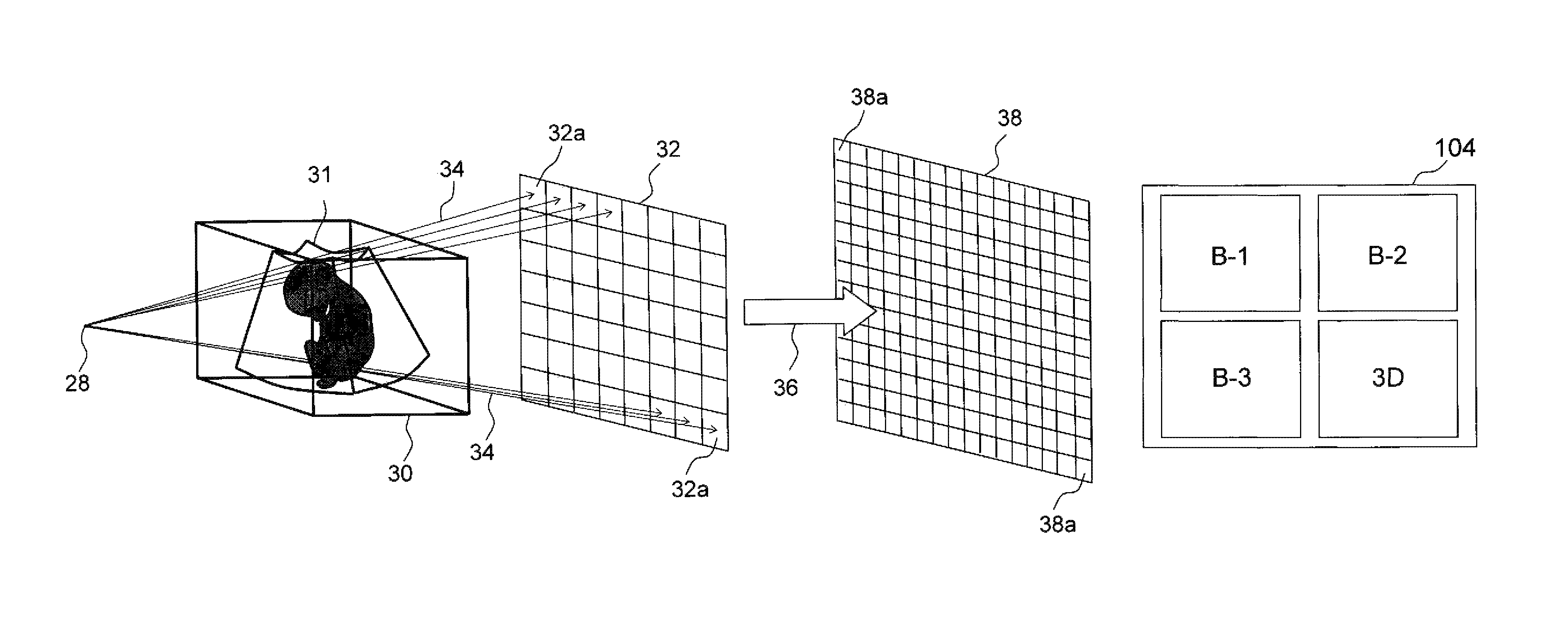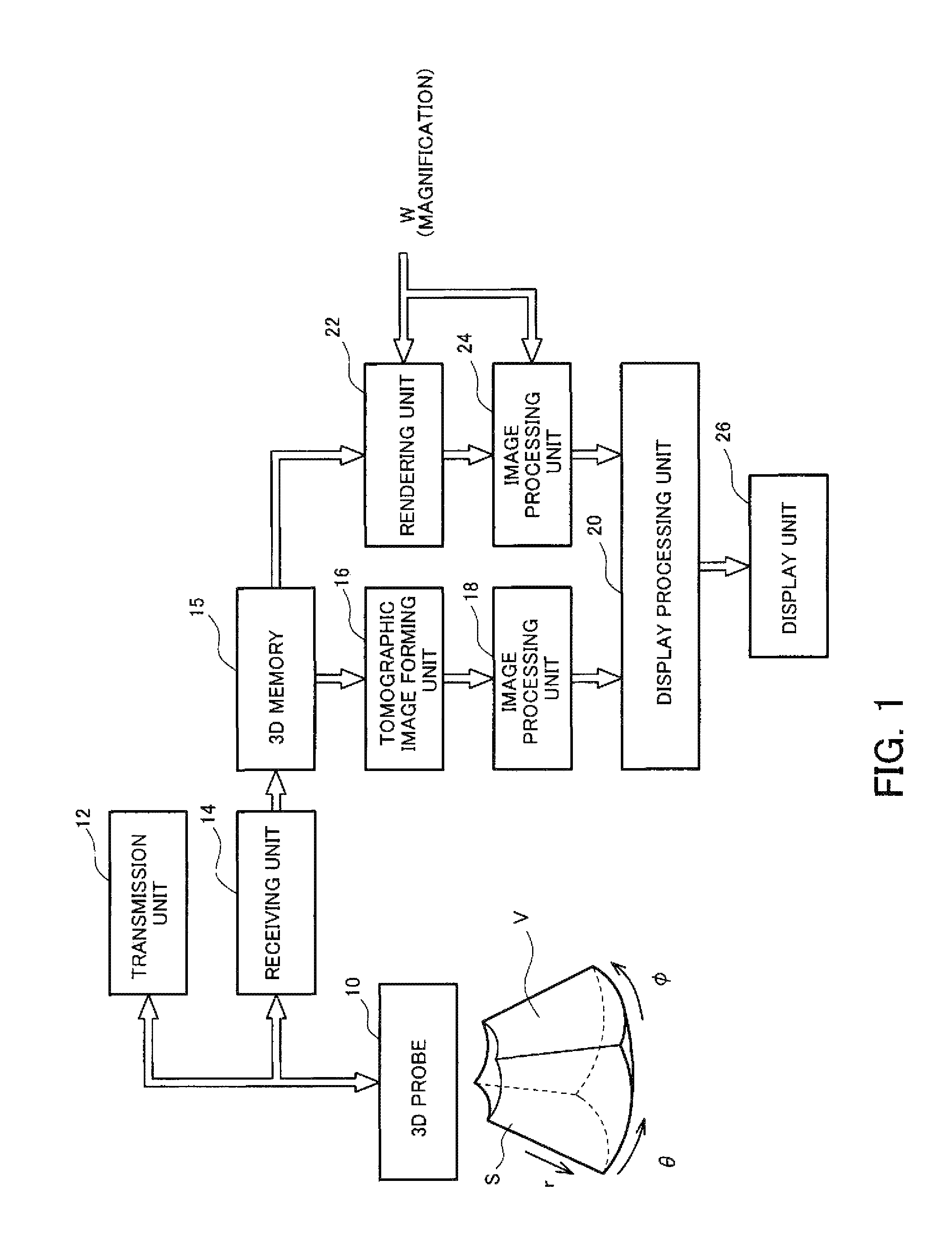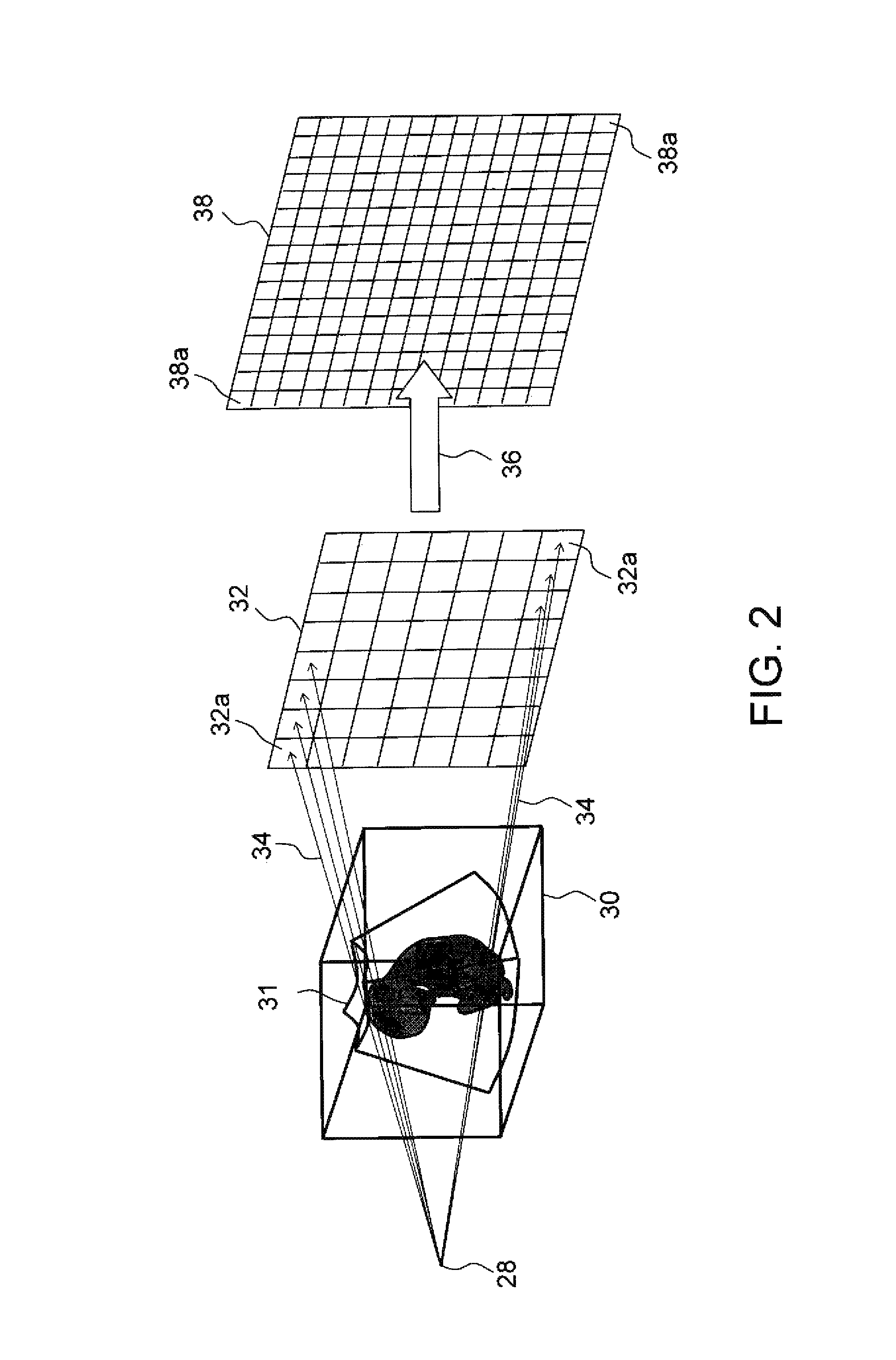[0013]An advantage of the present invention is to enhance the image quality of a three-dimensional ultrasonic image or to reduce the amount of computation for generating a three-dimensional ultrasonic image.
[0014]Another advantage of the present invention is to enable formation of a three-dimensional ultrasonic image having excellent image quality even when the number of rays is small.
[0015]In accordance with an aspect of the present invention, an apparatus of the present invention includes a rendering unit which sets a plurality of rays with respect to volume data acquired from a three-dimensional space within a living organism and executes a rendering operation along each ray to generate an original image in the form of a three-dimensional image, and a directional interpolation processing unit which generates a display image based on the original image, the directional interpolation processing unit applying directional interpolation processing based on the original image to each of noted pixels forming the display image to thereby generate an interpolated pixel value for the noted pixel, wherein with the directional interpolation processing, a pixel reference direction for computing the interpolated pixel value is determined in a direction of flow of a tissue which is three-dimensionally represented in the original image.
[0016]With the above structure, an original image is first generated in the form of a three-dimensional image by volume rendering processing, and then, directional interpolation processing is applied to the original image to generate a display image based on the original image. The directional interpolation processing is not processing which equally references a whole region around a corresponding point (a point of interest) serving as a center, but is processing which determines a pixel reference direction in the direction of flow of a tissue and computes an interpolated pixel value by using a plurality of pixel values arranged in the pixel reference direction. Accordingly, with this processing, the contour of a tissue can be clarified, so that blurring generated on the three-dimensional image can be improved. Stated inversely, even if the number of rays is reduced to form a three-dimensional image having low resolution, by applying the directional interpolation processing to the three-dimensional image in an ex-post manner, a three-dimensional image of high resolution can be generated. As such, the reduction in the amount of computation and the enhancement of the image quality can be accomplished simultaneously. Preferably, the display image is an image having a magnification or a resolution which is different from a magnification or a resolution of the original image, and the magnification or the resolution is changed at the time of the directional interpolation processing.
[0017]Preferably, the directional interpolation processing unit includes an evaluation value computation unit which sets a plurality of mutually different candidate directions on the original image, using a corresponding point corresponding to the noted pixel as a reference, and computes an evaluation value indicating a variation in pixel values in each of the candidate directions; a direction determination unit which determines the pixel reference direction based on a plurality of evaluation values which are computed; and an interpolated pixel value computation unit which computes the interpolated pixel value based on a plurality of pixel values concerning a plurality of pixels arranged in the pixel reference direction. The pixel reference direction is a direction along a contour (boundary) of a tissue. It is possible to either obtain a normal direction with respect to the contour first and then determine the pixel reference direction which is orthogonal to the normal direction, or to directly determine the pixel reference direction as a direction parallel to the contour. In the former case, the pixel reference direction may be determined by specifying a candidate direction with the maximum dispersion value among a plurality of candidate directions and determining the direction orthogonal to the specified direction. In this case, the pixel reference direction may be determined as one of the plurality of candidate directions, or the pixel reference direction may be determined between two candidate directions. Alternatively, the pixel reference direction may be determined as a direction with the minimum dispersion value among the plurality of candidate directions.
[0018]Preferably, as a result of applying the directional interpolation processing to each of pixels forming the display image, the display image corresponding to an enlarged image of the original image is generated, and an enlargement ratio of the display image is determined based on the number of rays which is set for generating the original image. As the number of pixels forming a three-dimensional image is determined in accordance with the number of images (the number of views) which are displayed simultaneously in a single screen, it would be desirable to first determine the number of rays corresponding to the smallest image and, when it becomes necessary to display a larger image, to increase the magnification in the direction interpolation processing in accordance with a ratio of change of the size. In other words, the magnification may be changed in accordance with the number of views, with the number of rays being fixed independently of the number of views.
 Login to View More
Login to View More  Login to View More
Login to View More 


